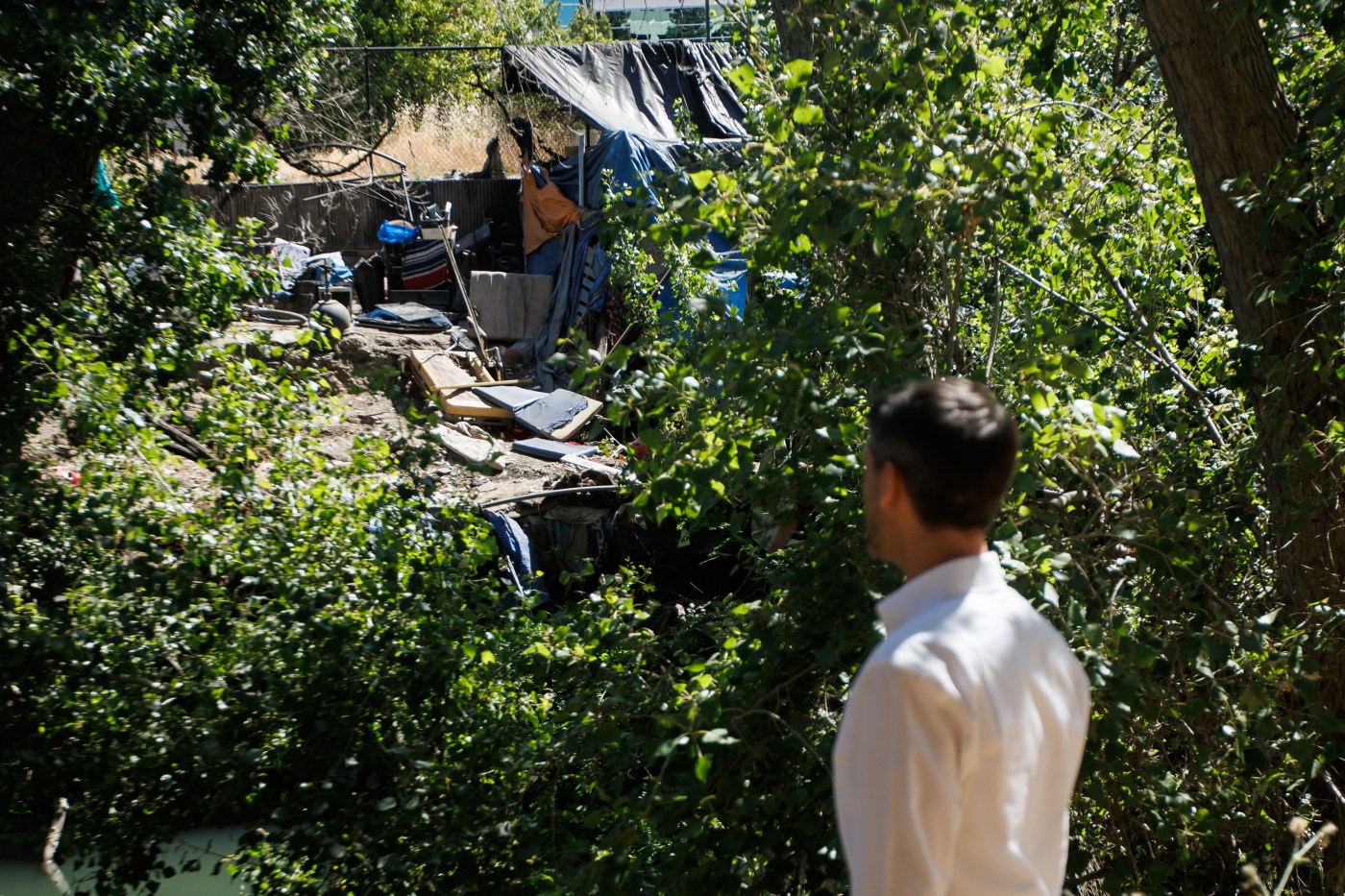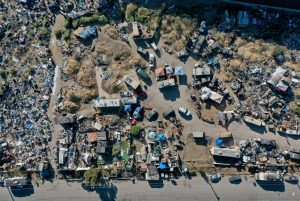San Jose has selected the location for its first safe sleeping site as city officials work to move hundreds of homeless people away from waterways and into sanctioned encampments.
The first site, located at 1157 E. Taylor St. near Watson Park, has faced its share of difficulties, as homeless residents previously set up camps there in squalid conditions, leaving trash, shopping carts, and human excrement. At one point, squatters even occupied a city-owned property nearby.
However, Mayor Matt Mahan said the site presents an opportunity to restore Watson Park’s green space while providing homeless residents a more dignified place to live.
“It’s a pretty great illustration of what is possible,” Mahan said. “This was one of the first cleanups we did, and I was shocked at just how impacted the area was.”
Already facing a housing and affordability crisis, San Jose needed to develop a plan to move nearly 500 homeless residents living along the city’s waterways after the San Francisco Bay Regional Water Quality Control Board pressured it to clean up pollution and comply with the Clean Water Act.
City officials attributed 88% of the pollution in the waterways to the unsanctioned encampments, and Mahan warned that failure to meet those mandates could result in tens of thousands of dollars in daily fines.
Mahan said that one of his biggest priorities when he took office was to treat homelessness as the crisis it is.
He added that it was not sustainable for the city to continue spending millions of dollars to follow and break up unsanctioned encampments across the city.
Last year’s homelessness count found approximately 6,340 homeless residents, which included nearly 4,400 people living in encampments or vehicles.
While San Jose has previously prioritized quick-build communities, like tiny homes, for interim housing solutions, the city began looking at various alternatives, including safe sleeping and safe parking sites.
In June, the San Jose City Council pre-approved eight potential safe sleeping sites for further evaluation before choosing the Taylor Street property as its first. Although it’s early in the process, city officials hope to have the site operational by early 2025. It’s unknown how many residents the site could serve just yet, but the city said a pilot program might best serve between 50 and 100 residents at first.
Councilmember Omar Torres, whose District 3 include downtown San Jose, said he recognizes that there are no easy solutions to homelessness, and it requires “immediate, effective solutions.”
“While District 3 has taken the lead with the most supportive housing sites and tiny homes, it’s clear that this approach should serve as a blueprint for our entire city,” he said. “This humanitarian crisis isn’t just a District 3 issue—it’s a citywide challenge. I hope my colleagues will join me in exploring safe sleeping and other alternatives in housing our unhoused in their districts. We have to tackle this crisis together as a city.”
The city is also evaluating an empty lot at 14020 Almaden Rd. in South San Jose, three locations within Willow Glen at the VTA’s property, Lelong Street and Willow Street, near Almaden Road and Canoas Gardens Avenue, and a property off of Tully and Monterey Roads.
These sites could temporarily serve between 100 and 150 homeless residents and provide basic necessities like food, potable water, toilets and showers. Mahan toured a safe sleeping site in San Diego last month and saw a successful model that San Jose could replicate.
Related Articles
Tiny homes housing vs. jail diversion sparks a fresh round of neighborhood outrage in San Jose
This Bay Area county made refusing a shelter bed a crime. Is it helping solve homelessness?
San Jose begins clearing part of troubled Columbus Park homeless camp
While building ‘Camp Hope’ in Martinez, she lost $125,000 to a burglar who had sought her help. Now this former vice mayor is ready to do good deeds again
Does sleeping on the street make this disabled Bay Area Marine Corps veteran a criminal?
Mahan emphasized that the safe sleeping sites are not an end goal, but an incremental improvement over the status quo.
“This is really about being pragmatic,” Mahan said. “We need to, with urgency, create solutions that improve quality of life and reduce the impacts of encampments on the city.”
Although the city has faced some pushback from residents about its safe sleeping plan, more and more neighborhoods seem willing to work with officials.
“I’ve lived in San Jose for several decades, witnessing the increasing plight of people living in the streets, the creeks, or anywhere they could find,” said Jeff Levine, a local resident and spokesperson for the Roosevelt Neighborhood Association. “I applaud and support 100% the city creating safe sleeping sites. Our neighborhood understands that solving homelessness requires all neighborhoods throughout the city to be supportive of plans to get people out of the creeks, highway overpasses, streets, parks and into supervised housing.”












